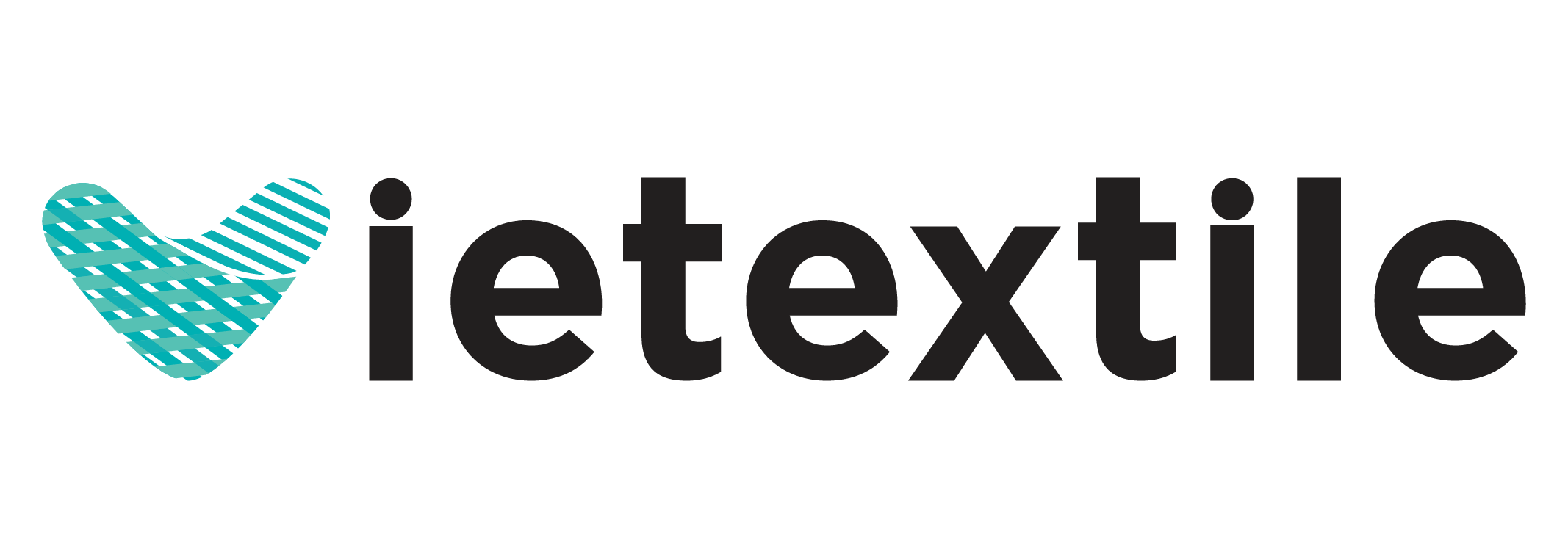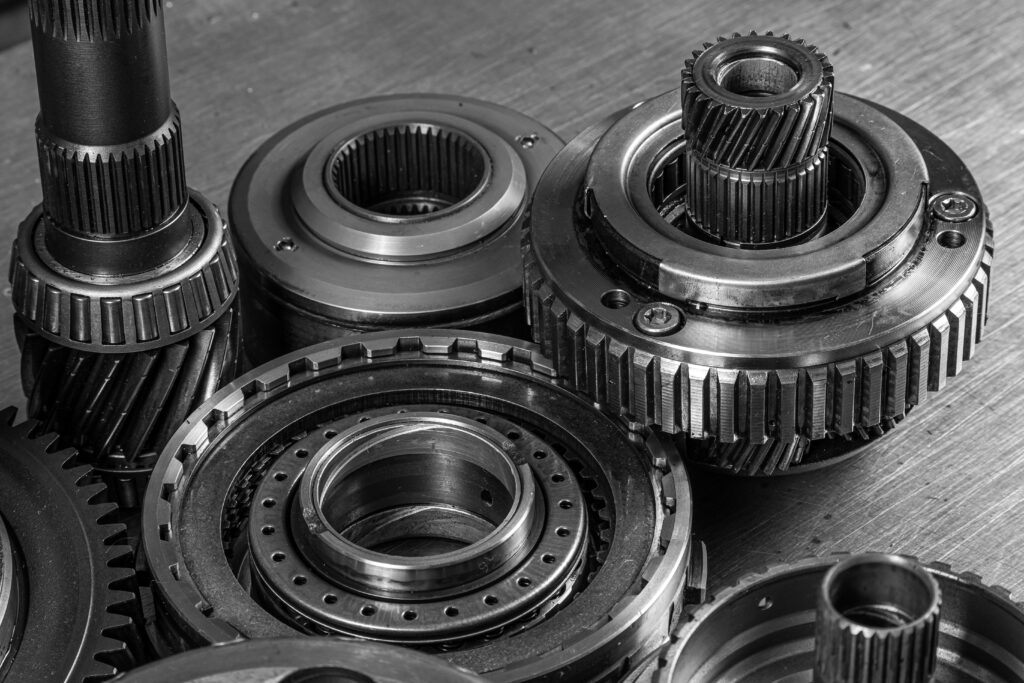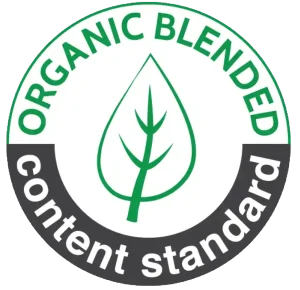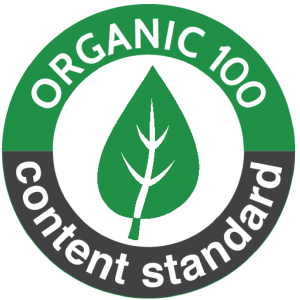Are you struggling to choose the right weaving machine components for your looms? Are you concerned about production line interruptions caused by premature part failures and rising maintenance costs? You’re not alone. The strategic selection of weaving machine components—from bearings and drive motors to sensors and needles—is one of the most critical factors in achieving stable, efficient, and profitable textile manufacturing.
A single faulty part can bring a multi-million dollar production line to a halt. As one textile factory in Southeast Asia learned, the failure of a single main shaft bearing—a seemingly small component—led to a two-day shutdown and over $3,000 USD in direct losses from downtime and missed deadlines. This illustrates a critical point: investing in quality weaving machine components is not an expense; it’s an investment in operational certainty.
This guide provides expert insights into choosing parts that last longer, perform better, and save you money in the long run.
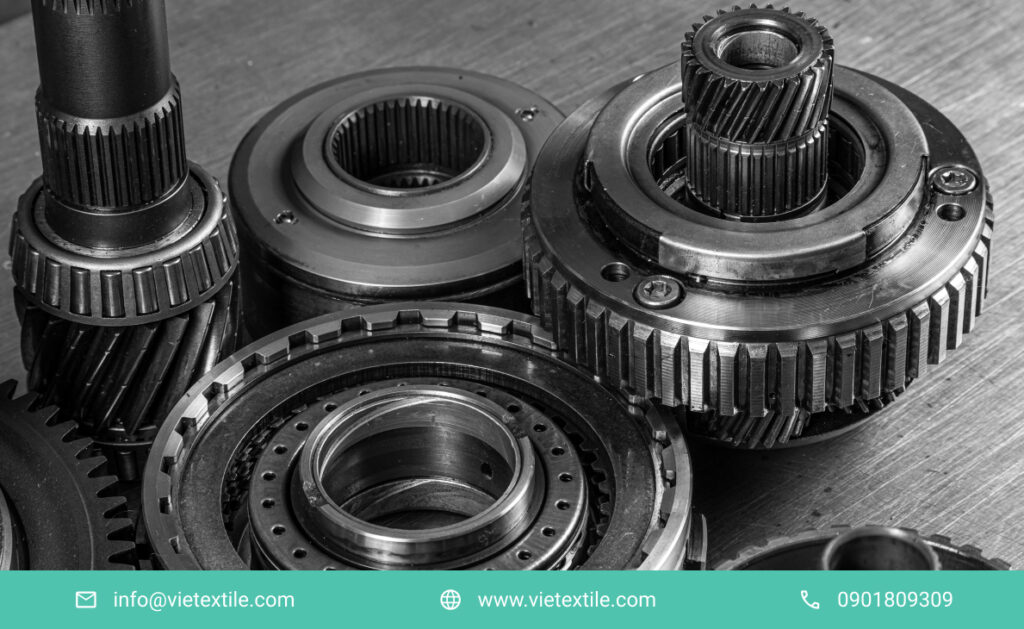
A weaving factory in Nam Dinh reported a financial loss of 72 million VND due to a worn-out main shaft bearing that went undetected. What seemed like a minor issue led to two full days of machine downtime, disrupting the entire production line and affecting delivery commitments. This incident highlights the critical importance of selecting quality Weaving Machine Components and performing regular inspections. Preventive maintenance isn’t just about reducing repair costs—it’s essential for maintaining uninterrupted operations and protecting your business reputation.
1. Understanding the 3 Core Categories of Weaving Machine Components
Nội dung tóm tắt
ToggleModern textile production cannot run efficiently without the right weaving machine components tailored to each specific loom. These parts—such as drive mechanisms, heald frames, and gear sets—act as the “mechanical heart” that ensures every meter of fabric is produced with precision, on schedule, and meets the required quality standards. Proper alignment between machine and parts minimizes defects, boosts operational speed, and enhances stability throughout the production line. Investing in compatible, high-performance parts is not just a technical necessity—it’s a strategic move toward sustainable productivity.
Not all parts are created equal. A component that works perfectly on a rapier loom might cause critical failures on an air-jet loom if it’s not to spec. Understanding the three main categories helps you make smarter purchasing and maintenance decisions for all your weaving machine components.
1.1 Mechanical Components (The Skeleton)
These are the foundational parts that create precise physical movement within the loom. This category includes crankshafts, bearings, gears, guide rails, and shuttle boxes. They are the workhorses of the loom, and their quality dictates the machine’s physical integrity and precision. When a gear made from inferior metal wears down, its timing becomes inconsistent, leading directly to fabric defects like uneven yarn spacing or slack threads.
1.2 Electrical & Electronic Components (The Nervous System)
Electronic components in weaving machines—such as motors, control boards, inverters, speed sensors, yarn break detectors, and PLC systems—function as the “brain” of the operation. These parts coordinate key processes including speed control, tension adjustment, and real-time error handling. When a control board becomes outdated or degraded, the machine’s response slows down, potentially causing jerking motions, system crashes, or incorrect commands. These issues can seriously affect fabric quality and production stability. Upgrading to weaving machine components is essential for smart manufacturing, boosting efficiency, and ensuring seamless textile operations in today’s digital age.
- Motors & Inverters (VFDs): Provide the power and precise speed control.
- Control Boards (PCBs): The central processing unit that executes commands.
- Sensors: A vast array of sensors for detecting yarn breaks, monitoring tension, and tracking speed.
- PLCs (Programmable Logic Controllers): The industrial computer that automates the entire weaving sequence.
As one automation expert in the textile industry in Vietnam noted, “Modern yarn break sensors can reduce weft-related fabric defects by up to 35%. Their ability to detect a break in just 0.05 seconds and stop the loom instantly prevents a minor issue from ruining meters of fabric.” Investing in high-quality electronic weaving machine components is key to smart manufacturing.
1.3 Consumable Components (The Wear-and-Tear Parts)
These are parts with a finite, planned service life that require regular replacement. This category includes weaving needles, cutters, heddles, droppers, and springs. The crucial mistake many managers make is choosing the cheapest option. Using low-quality consumable weaving machine components often doubles the replacement frequency and, more importantly, doubles the costly downtime required for installation.
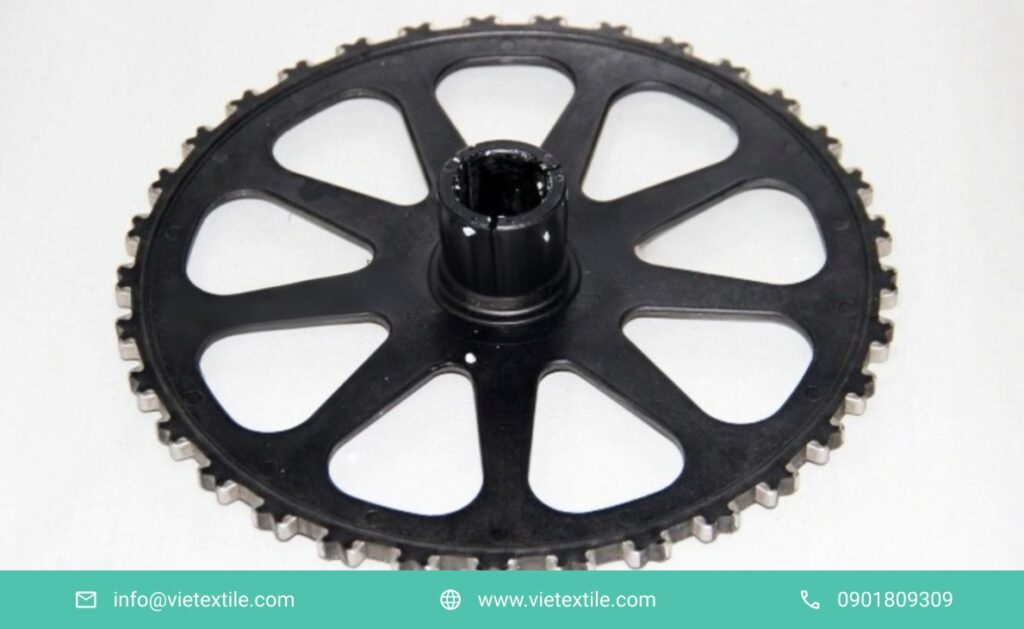
2. The 3-Point Checklist for Selecting Quality Weaving Machine Components
Don’t choose Weaving Machine Components just because they’re cheap—a common mistake among small and mid-sized textile factories. Low-cost components often come with hidden risks: shorter lifespan, poor performance, and a higher chance of causing machinery failure. When one faulty part stops the line, it leads to unexpected downtime, delayed orders, and reputational damage. Instead of focusing on short-term savings, invest in reliable, certified parts that ensure consistent performance and long-term stability for your production system.
In reality, the cost of frequent part replacements, unexpected machine downtime, and the impact of substandard fabric quality can far exceed the initial investment in high-quality, original weaving machine components. These losses go beyond direct expenses—they can delay deliveries, damage brand credibility, and erode customer trust. Making the right choice from the start by selecting durable, well-matched parts is a smart long-term investment that not only minimizes operational risks but also strengthens your product’s reputation in the competitive textile market.
2.1 Point 1: Material Quality and Construction
The raw material is the ultimate determinant of a Weaving Machine Components lifespan. No matter how well-designed a component is, if it’s made from substandard steel or low-grade engineering plastic, it will quickly deteriorate under the demands of high-speed textile production. That’s why choosing parts made from certified materials—offering proper hardness, corrosion resistance, heat tolerance, or abrasion resistance—is key to extending equipment life, reducing downtime, and optimizing long-term operating costs in textile manufacturing..
- For Metal Parts: A high-quality weaving needle made from premium alloy steel can operate reliably for over 2 million rotations while maintaining structural integrity and precision. This is the standard choice for industrial textile mills seeking high performance with minimal interruptions. In contrast, low-cost needles—especially unbranded imports from China—often fail after just 600,000 rotations due to bending, chipping, or tip breakage, leading to weaving defects and early replacement. Investing in durable weaving needles is a smart way to protect your machinery and ensure consistent, long-term production efficiency.
- For Plastic Parts: When selecting weaving machine components, it’s essential to verify key technical standards to ensure durability and safe operation. For metal parts such as needles, bushings, or shafts, anti-rust treatment and a hardness rating that meets HRC standards (typically HRC 58+) are necessary to withstand wear in high-friction environments. For components made of engineering plastics like sensor housings or yarn guides, ensure they offer heat resistance above 150°C to prevent deformation under high-speed operation. Checking these specifications helps textile mills reduce breakdowns, maintain stable performance, and extend the lifespan of critical parts..
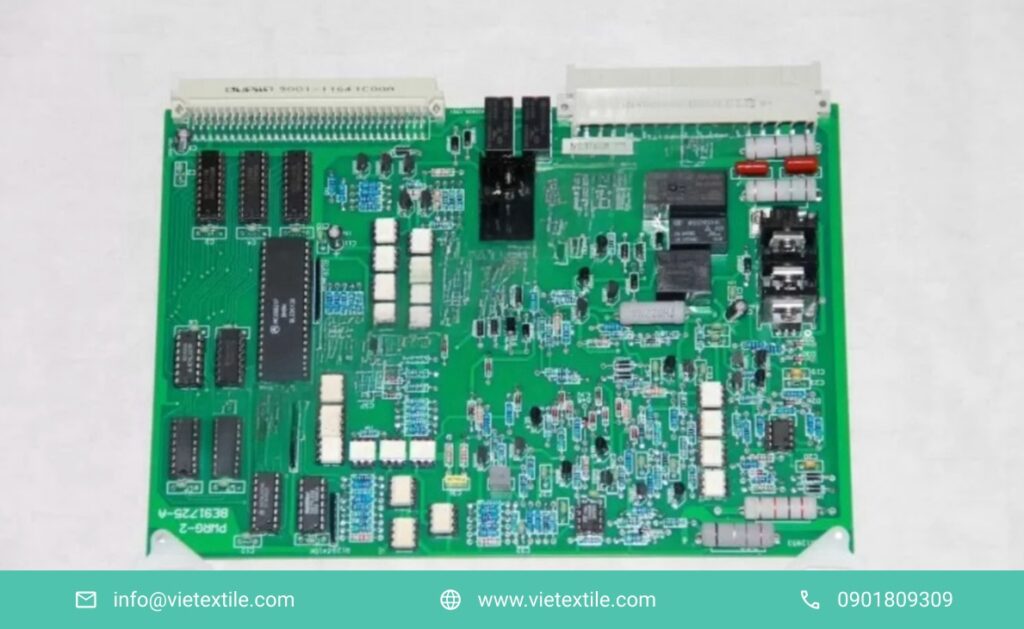
2.2 Point 2: Brand Reputation and OEM Compatibility
Using genuine or certified OEM (Original Equipment Manufacturer) weaving machine components from brands like Picanol, Toyota, Staubli, or Saurer guarantees perfect compatibility. Each manufacturer designs their machines as an integrated system. Using a third-party motor that doesn’t match the original’s torque specifications can cause the entire loom to run at reduced power and efficiency.
2.3 Point 3: Certifications and Quality Assurance (CO/CQ)
When sourcing weaving machine components, it’s essential to request both the CO (Certificate of Origin) and CQ (Certificate of Quality) to verify the part’s authenticity and performance standards. Components certified under ISO 9001, RoHS, or CE tend to offer greater durability, consistent efficiency, and are environmentally safer. Choosing certified parts not only enhances your factory’s operational reliability but also ensures compliance with global technical requirements—an important advantage for textile manufacturers targeting international markets.
- CO (Certificate of Origin): Verifies the country where the part was manufactured.
- CQ (Certificate of Quality): Confirms the part has passed quality control tests.
- Other Certifications: Look for quality management certifications like ISO 9001, or safety/environmental compliance like RoHS or CE. These are indicators of a professional, reliable manufacturer.
3. The Real ROI: Benefits of Investing in High-Quality Parts
Choosing the right weaving machine parts isn’t just about “buying good products”—it’s a long-term investment strategy that impacts machine performance, durability, and overall production capacity. High-quality, well-matched components reduce wear, save energy, and prevent unexpected downtime. This proactive approach not only cuts maintenance costs but also enhances operational stability and brand reputation. Making smart purchasing decisions from the outset is the foundation for sustainable growth in today’s competitive textile industry.
- Increased Productivity: A precision inverter motor can increase weaving efficiency by 12-18% over a standard motor.
- Energy Savings: Modern, efficient variable frequency drives (VFDs) can reduce electricity consumption by over 20% per hour of operation.
- Enhanced Safety: Control boards with dual-layer insulation and built-in overload protection reduce the risk of electrical faults and fires, protecting your entire factory.
4. A Proactive Approach to Component Maintenance & Replacement
You can’t wait until a Weaving Machine Components breaks before replacing it—whether it fails suddenly or gradually, the cost of inaction is high. In the textile industry, where production is continuous and time-sensitive, the failure of even a single part can halt the entire operation. This not only disrupts workflow but also causes delays, lost output, and damaged reputation.
Rather than waiting for breakdowns to occur, textile businesses should adopt routine maintenance and planned part replacement as a strategic approach. This proactive model significantly reduces major repair costs, prevents order delays, and safeguards overall productivity. In the age of Industry 4.0, the mindset of “prevention over correction” is more than just a technical practice—it’s a modern operational philosophy. It enables businesses to stay in control, optimize resources, and maintain a strong competitive edge in an increasingly fast-paced manufacturing environment. A proactive weaving machine maintenance schedule is essential.
4.1 Standard Maintenance Schedule
Implementing a regular maintenance schedule is vital for ensuring Weaving Machine Components operate reliably, extend component lifespan, and minimize technical failures. A well-structured maintenance plan should include:
- Weekly:
- Clean the yarn feeding system to remove dust and fibers that may disrupt yarn flow.
- Inspect optical sensors for responsiveness to ensure accurate yarn break detection.
- Monthly:
- Lubricate the main shaft and high-friction areas to reduce wear and extend service life.
- Check motor noise and vibration levels to detect early signs of mechanical issues.
- Quarterly:
- Measure and adjust belt tension to prevent slippage or breakage during operation.
- Back up PLC control board data to ensure recovery in case of hardware failure.
- Annually:
- Replace all consumable parts (e.g., needles, cutters, springs, bushings) that have reached the end of their service life to maintain high performance and safety.
Following this schedule helps manufacturers minimize unplanned downtime, control maintenance costs, and sustain long-term production efficiency. It’s not just a technical measure—it’s a smart management strategy that ensures smooth operations, meets delivery deadlines, and strengthens a factory’s competitive edge.
4.2 Signs That Weaving Machine Components Need Replacement
Identifying early warning signs of weaving machine component wear is essential for minimizing downtime and ensuring production continuity. Common indicators include:
- Unusual vibration or loud noises during machine operation, often caused by worn-out bearings, misaligned shafts, or damaged cutting knives.
- Control board freezes or fails to receive sensor signals, indicating degraded circuitry or faulty internal connections.
- Damaged or chipped weaving needles, resulting in fabric defects such as misaligned wefts or torn edges—clear signs the needle needs replacement.
- Unresponsive or false-triggering sensors, which disrupt automation and can cause technical inconsistencies if not addressed promptly.
Recognizing these symptoms and acting quickly ensures stable performance and protects the integrity of your textile production line.
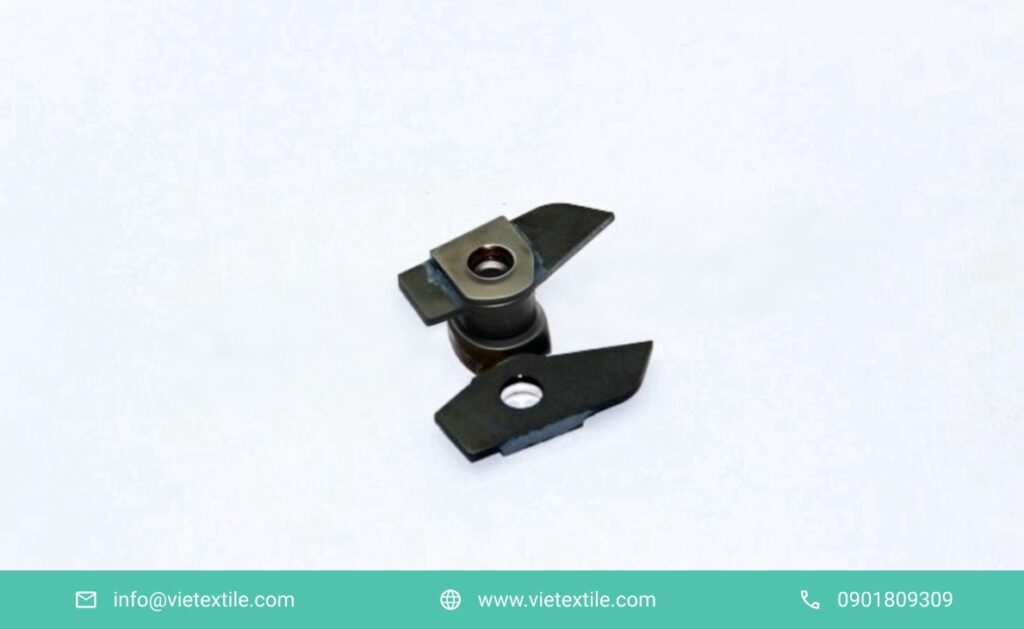
4.3 Safe Replacement Procedure for Weaving Machine Components
To guarantee both safety and operational reliability during the crucial process of replacing weaving machine components, textile factories must meticulously adhere to a strict set of procedures. This systematic approach is paramount not only for protecting personnel but also for safeguarding the intricate machinery and maintaining consistent production quality. By rigorously following established guidelines for component replacement, from initial lockout/tagout to final testing, factories can significantly minimize risks, prevent costly downtime, and ensure their weaving machines operate at peak performance, contributing to efficient and secure garment manufacturing.
- Completely disconnect all power sources before any intervention, including auxiliary control systems, to prevent electric shocks or unintended machine activation.
- Follow the manufacturer’s technical diagram precisely during removal and installation. Each brand—such as Picanol, Toyota, or Tsudakoma—has its own mechanical layout, and incorrect handling may cause damage or void the warranty.
- Log each replacement in a maintenance record, noting the part type, replacement date, technician, and relevant notes. This helps track component lifespan, plan future maintenance, and control operational costs effectively.
5. Conclusion: The Strategic Value of Quality Weaving Machine Components
The performance of your entire production line comes down to the quality of its smallest parts. Choosing the right weaving machine components is a strategic investment in reliability and efficiency. By prioritizing high-quality materials from reputable brands, you reduce downtime, lower your total cost of ownership, and ensure your factory can consistently produce high-quality textiles.
5.1 Your Partner for High-Performance Weaving Components
With years of experience serving the textile industry, VieTextile is a leading supplier of genuine, high-quality weaving machine components, specializing in electrical and electronic parts like motors, sensors, control boards, and inverters. All our products are sourced directly from leading brands in Japan, Germany, Italy, and South Korea, ensuring full compatibility and international quality standards.
Beyond being a supplier, VieTextile is your technical partner. We help clients assess their machinery, plan component upgrades, and implement smart, automated systems.
Contact VieTextile today for a quote on components tailored to your looms or for a consultation on optimizing your entire production line.
6. FAQ
1. Which weaving machine components need to be replaced most often? Consumable parts like weaving needles, cutters, heddles, droppers, and shuttle pickers (on shuttle looms) have the shortest lifespan and typically require replacement every 3-6 months, depending on production intensity.
2. How can I test if a loom’s motor is failing? Use an insulation resistance meter to check its electrical integrity. Also, listen for unusual humming or grinding sounds and feel for excessive heat or vibration after a long run.
3. Can a burnt control board be repaired? It depends on the extent of the damage. A minor short circuit on a power component might be repairable. However, if the damage has reached the main processor or logic chips, a full replacement is almost always necessary.
4. Are OEM parts as good as genuine branded parts? A high-quality OEM part from a reputable supplier can be excellent. However, not all OEM parts are created equal, and some may not be perfectly compatible with your specific loom model. It’s crucial to verify the supplier’s quality standards and warranty.
5. Should I use wireless sensors on my weaving machines? Wireless sensors are a great option for modern looms with compatible control systems (“smart looms”). They reduce complex wiring and make maintenance easier, but they require a stable wireless factory network and a compatible operating system to function reliably
